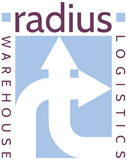How to Use Shipping Data to Make Logistics Decisions
In any business, but especially in logistics, data is critical. The ability to track and analyse data points is essential to making informed decisions that can improve your business operations.
But what information should you be tracking? And how can you use that data to make better decisions about your supply chain? Keep reading to find out.
Get Insight Into What Works — and What Doesn’t — in Your Supply Chain
Any business owner will tell you that trial and error is a part of the learning process. The same is true when it comes to logistics.
But what if you could learn from your mistakes without actually making them? That’s where shipping data comes in.
By tracking information such as on-time delivery rates, damages and claims, and customer satisfaction scores, you can see which areas of your supply chain are running smoothly and which areas need improvement.
How to Leverage Supply Chain Data for Better Business Decisions
Making decisions based on accurate data is the best way to ensure that those decisions are informed and precise.
However, sifting through all of the available information can be daunting. That’s why deciding which metrics are most important to your business is essential and then focusing on those.
Once you know what you’re looking for, you can use analytics tools to help you make sense of the numbers and identify trends.
Decide What Data to Track
As we mentioned, you could track many data points regarding your supply chain. So how do you decide which ones are worth your time and energy?
Start by taking a look at your business goals and objectives. What do you hope to achieve? Once you understand your goals well, you can start thinking about which metrics will help you measure progress towards those goals.
Determine how Much Information You Need
Not all data is created equal. Some data points will be more important than others in helping you make informed decisions about your business.
For example, if your goal is to improve customer satisfaction, tracking on-time delivery rates would be more helpful than tracking order sizes. Once you’ve determined which metrics are most important, you can start thinking about how often you need to collect data to make meaningful changes.
Tools for Tracking Data
Now that you know what data to track, you need to determine how to track it. There are a few different options available, but one of the best is using transportation management software (TMS).
TMS systems are designed specifically for tracking data related to shipping and logistics. They can give you real-time visibility into your supply chain and provide powerful analytics tools to help you make better decisions about your shipping operations.
Other options are available if you don’t have the budget for a TMS system. You could use a spreadsheet to track your data points, but this can be time-consuming and difficult to manage if you have a lot of shipments.
Another option is to work with a third-party logistics provider (3PL) that offers transportation management services. 3PLs can provide valuable insights into your shipping operations and help you make better decisions about your logistics strategy.
Understand Your Data
Understanding your data is the first step in shipping data to make logistics decisions. You need to know what information you have and how it can improve your shipping process. Shipping data can include transit times, delivery times, shipping costs, and more.
Analyse Your Data
Once you understand your shipping data, you can start to analyse it. Look for patterns and trends in the data that can help you to improve your shipping process.
For example, if shipments take longer to arrive during certain times of the year, you can adjust your shipping schedule accordingly.
Make Adjustments Based on Your Findings
After analysing your shipping data, you should make adjustments based on your findings. This could involve changing your shipping routes, altering your packaging, or making other changes to improve your shipping process.
Remember to track your results so that you can continue to improve over time.
Use Other Data Sources
In addition to using your shipping data, you can also use other data sources to make logistics decisions. This could include public data from the government or private data from companies specialising in logistics.
Using multiple data sources, you can get a complete picture of the shipping industry and make better decisions for your business.
Monitor Results of Changes
Once changes have been implemented, monitoring the results to see if they have the desired effect is important. This could involve tracking shipment volume, transit times, and delivery costs. If the changes do not have the desired effect, adjusting or revising them may be necessary.
Hire a Logistics Consultant
You can hire a logistics consultant if you want expert help with shipping data to make logistics decisions.
These professionals can help you understand your data, analyse it, and make improvements. They can also guide other aspects of logistics, such as transportation and warehousing.
Summary
Shipping data can be used in various ways to improve logistics decisions. By understanding shipping data, businesses can make changes to improve the efficiency of their shipping process.
Some common data points in shipping data include shipment volume, transit times, and delivery costs. Shipping data can be collected through surveys, interviews, and observation.
By following these tips, businesses can make better decisions about their shipping process.



